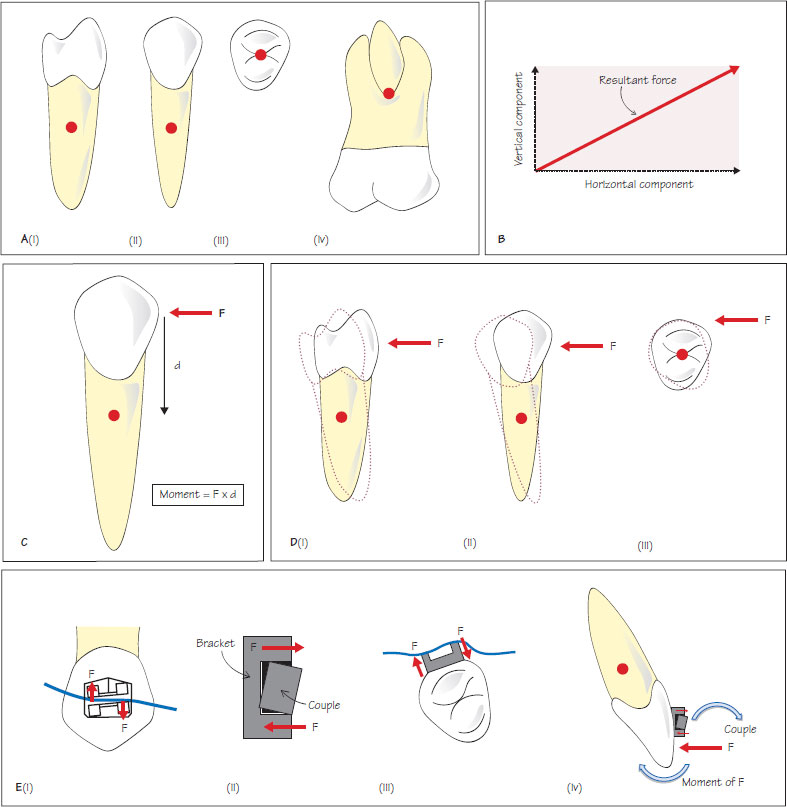36
Biomechanics of tooth movement
Figure 36.1 (A) The centre of resistance (red circle) of a single-rooted tooth shown in the (i) buccolingual, (ii) mesiodistal and (iii) occlusal plane. (iv) The centre of resistance of a molar is located in the furcation region. (B) The resultant force can be broken down into its various components. Here the resultant force has both a horizontal and vertical component that will influence the direction of tooth movement. (C) The size of a moment is equal to the magnitude of the force (F) multiplied by the distance from the tooths centre of resistance (d) from which it acts. (D) Forces applied at a distance from the centre of resistance result in rotation of the tooth. This should be considered in all planes of space: (i) buccolingual, (ii) mesiodistal and (iii) occlusal. (E) An archwire in a bracket slot can be used to apply a couple in the: (i) mesiodistal, (ii) buccopalatal, and (iii) occlusal planes. (iv) The couple created between the bracket slot and archwire can be used to control the tipping caused by the moment of the force (F). In this way, bodily tooth movement can be achieved.

Biomechanics is the science concerned with the effects of forces acting on the human body. A basic understanding of the biomechanics of tooth movement will help the reader to understand the effects an applied force will have on the direction of tooth movement.
Centre of resistance
Single teeth, groups of teeth and the facial bones have a centre of resistance. This is the point in a body at which resistance to movement is concentrated. I/>
Stay updated, free dental videos. Join our Telegram channel

VIDEdental - Online dental courses


